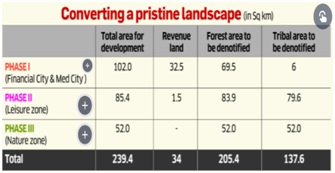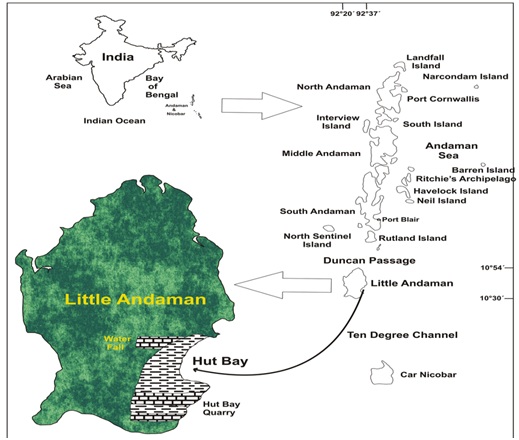

In what appears to a re-run of recent developments in Little Andaman Island, more than 150 sq. km. of land is being made available for Phase I of a NITI Aayog-piloted ‘holistic’ and ‘sustainable’ vision for Great Nicobar Island, the southernmost in the Andaman and Nicobar group.
Context
In what appears to a re-run of recent developments in Little Andaman Island, more than 150 sq. km. of land is being made available for Phase I of a NITI Aayog-piloted ‘holistic’ and ‘sustainable’ vision for Great Nicobar Island, the southernmost in the Andaman and Nicobar group.
Background
- India is planning to develop a “sustainable” mega-city in Little Andaman.
- The move to develop Great Nicobar Island is the latest in an ongoing Holistic Development of Islands (HDI) programme launched by the Niti Aayog in 2017.
- An Island Development Agency was set up at the time under the Home Minister, with the specific aim of developing the islands.
- The government is looking to make the most of these reserves of natural resources.
- However, this latest NITI Aayog’s project seems to have ignored all the concerns regarding tribal and ecology of the region.
Analysis
What is the proposed project?
- The ‘Sustainable Development of Little Andaman Island - Vision Document’, is the NITI Aayog’s proposal to leverage the strategic location and natural features of the island.
- The plan suggests conserving 65% of the island’s virginal landscape while denotifying 6% of existing tribal reserved area on land and 57% of existing tribal area on the water.
- The project is spread over three zones:
- the first covering 102 sq. km along the east coast with a full-size airport which can host all aircraft types, aerocity, an expanded jetty and marina, tourism centres, convention centres, and hospitals or ‘medicity’
- the second a leisure district spread over 85 sq. km of pristine forest with a tourism SEZ, film city and residential area
- the third a 52 sq. km zone with a nature retreat, forest resort and natural healing facilities.

- In the islands of the Little Andaman and Great Nicobar two new Greenfield Coastal Cities will be built.
- The cities will be developed as Free Trade Zones to compete with global cities like Hong Kong, Singapore, and Dubai.
The region profile
- Nestled in the Bay of Bengal on India’s eastern coast, Andaman and Nicobar Islands is a union territory (UT) with more than 300 islands – among the largest of which is the 1,000 square foot Great Nicobar Island.
- Little Andaman is the fourth largest island in the 836-strong archipelago.
- The island is southernmost in the Andaman cluster and is about 88 kilometres south of Port Blair.
- Little Andaman is socio-ecologically of high importance and large parts of the island are protected: as Reserve Forest under the Indian Forest Act and as the Onga Tribal Reserve.

|
Andaman and Nicobar Islands
|
What has caused outrage?
- The proposed plan to relocate the PVTG has caused global outrage.
- “If required, the tribals can be relocated to other parts of island” that are “conserved and protected,” as per the plan.
- According to the latest census, from 2011, there are 44 Great Andamanese, 380 Jarawa, 101 Onge, 229 Shompen and 15 Sentinelse remaining in the Andaman and Nicobar Islands.
|
The Onge tribe
|
Other issues and challenges
- Concerns over biodiversity preservation: The Project calls for clearing about 224 sq. km or 32% of the reserve forest with around two million trees and de-notifying 135 sq. km or about 30% of the Onge Reserve.
- Vulnerability to tsunamis and earthquakes: The Andaman & Nicobar islands are in a seismically highly active zone. The 2004 earthquake and accompanying tsunami devastated large parts of the island chain.
- Nicobar and Car Nicobar lost almost one-fifth of its population and close to 90% of its mangroves.
- Many islands were completely submerged or even split into two.
- Environmental damage: The Forest Department reportedlyobjected to the project citing-
- massive environmental damage
- harm to wildlife including habitats and breeding grounds of the globally endangered Giant Leatherback sea turtles
Conclusion
Drawing on these natural reserves and enhancing infrastructure are tourism hot spots such as Great Nicobar will be a crucial part of India’s economic recovery.
However, the potential impacts of the project on the ecosystem are worrisome. The region is incredibly important cultural heritage sites and such sort of development can destroy the valuable ecosystem.




